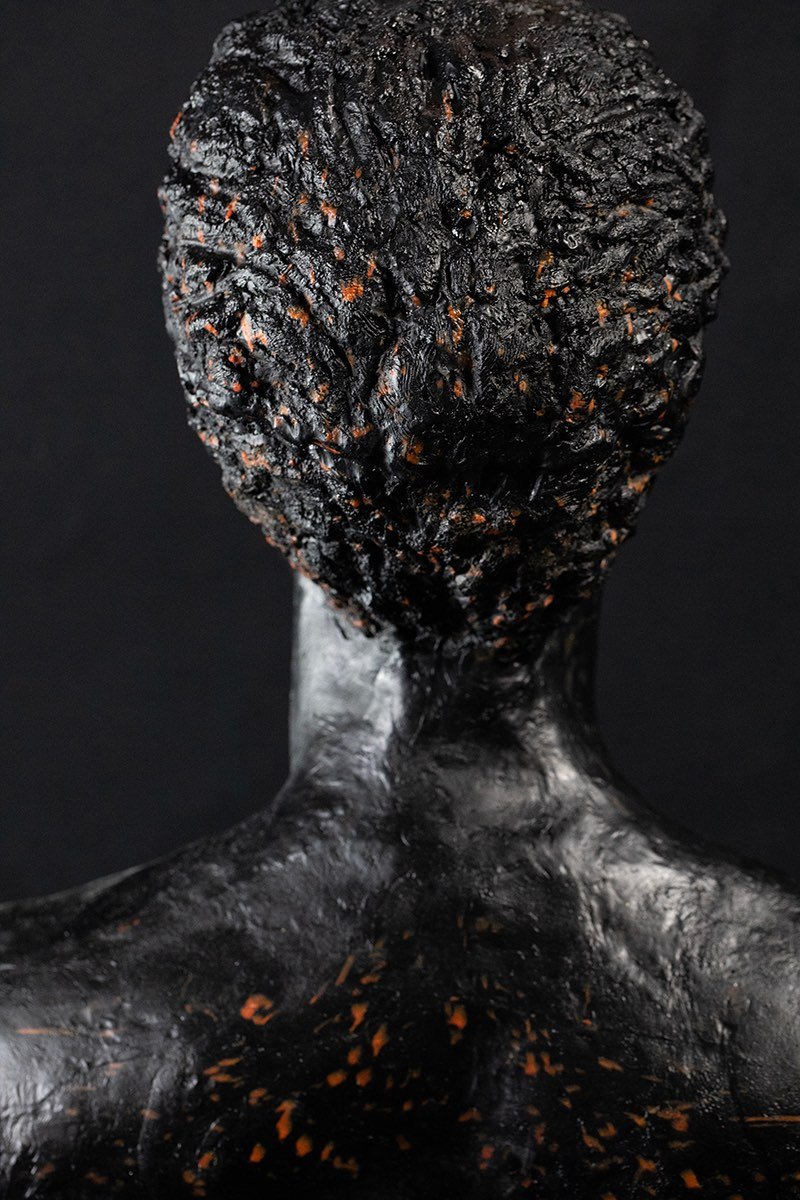
Miau
Miau represents the sacred aspects of Black queer sexuality, beauty, art, wealth, and pleasure.
Miau champions the exuberant variety of sexual and gender expression found throughout the natural world, particularly overseeing homosexuality, transgender dynamics, and nonreproductive heterosexuality. He illustrates how integral queer sexual behaviors and identities are to the tapestry of life and how ubiquitous they are across species. He validates LGBTQ+ identities and relationships as fundamental expressions of nature’s creativity and abundance, thereby enriching the understanding of human diversity and its sacred value.
Miau embodies the intricate relationship between beauty, harmonics, and the divine proportions that govern the universe. As a representation of these concepts, Miau underscores the idea that beauty is not merely aesthetic pleasure but a reflection of mathematical balance and cosmic order. This deity teaches that the harmonics of beauty—the ratios and geometries that please the eye—are manifestations of deeper spiritual truths and serve as conduits for experiencing the divine. Miau’s connection to these principles emphasizes that beauty in art and life is essential for spiritual enlightenment and societal cohesion. By integrating beauty into everyday life and recognizing its profound impact on the human spirit, Miau promotes a deeper understanding of how aesthetics can elevate consciousness and refine the human experience, making beauty a vital element in the quest for personal and communal harmony.
Miau stands as a pivotal figure emphasizing the profound connection between art and spirituality. As a deity associated with the synthesis of visual beauty and divine expression, Miau champions the idea that art is not merely a form of creative output but a sacred act that bridges the mundane with the mystical. This embodiment encourages the understanding that true art carries the essence of the gods and transforms abstract spiritual truths into tangible forms that speak directly to the soul. Through Miau, art is revered as a vital ritualistic tool that captures and conveys the emotional and spiritual longings of humanity, offering both a reflection of the divine and a means to access it. This perspective elevates the role of artists as not just creators but as priests of the visual, tasked with crafting works that depict the gods and invoke their presence in order to facilitate a deeper communion with the divine.
Miau also embodies the divine aspects of wealth and luxury, highlighting them not merely as symbols of material success but as essential elements of spiritual and aesthetic enrichment. This portrayal of Miau suggests that wealth and luxury are not just ends in themselves but means to facilitate greater cultural and spiritual pursuits. By encouraging the acquisition and appreciation of fine things, Miau champions the idea that luxury can elevate the human experience, making it more beautiful and spiritually fulfilling. This connection posits that true wealth lies in the ability to foster beauty and comfort in one’s surroundings, enhancing not only individual well-being but also contributing to a more harmonious society.
Miau is deeply intertwined with knowledge, education, and the powerful tool of creative visualization. This deity embodies the principle that true education extends beyond the acquisition of factual knowledge to include the profound mastery of visual and symbolic understanding. Miau champions the use of imagery and symbols (such as hieroglyphic writing) as core educational tools, promoting a pedagogy that leverages visual learning to deeply engrain complex concepts and spiritual truths. This approach to education underscores the belief that the spirit world communicates through images, making symbols and totems the key to spiritual experience. By fostering a strong connection to creative visualization, Miau enhances the ability to manifest desires into reality, teaching that imagery is not merely illustrative but fundamentally transformative, shaping both personal destiny and collective cultural identity.
Miau offers a nuanced understanding of the interplay between pleasure and pain, framing these experiences within a spiritual and psychological context. He teaches that pleasure results when reality matches the mental images we hold, whereas pain emerges from a discord between our expectations and actual experiences. This conceptualization invites adherents to reflect on the images they cultivate mentally and their reactions to life’s realities, urging a reconciliation of internal visions with external truths to mitigate suffering and enhance joy. Through Miau, followers are encouraged to explore the deeper meanings behind their emotional responses, positioning pleasure and pain not just as emotional states but as significant indicators of spiritual alignment and misalignment. This insight is pivotal in navigating life’s challenges and in pursuing a path that fosters both personal happiness and spiritual growth.






